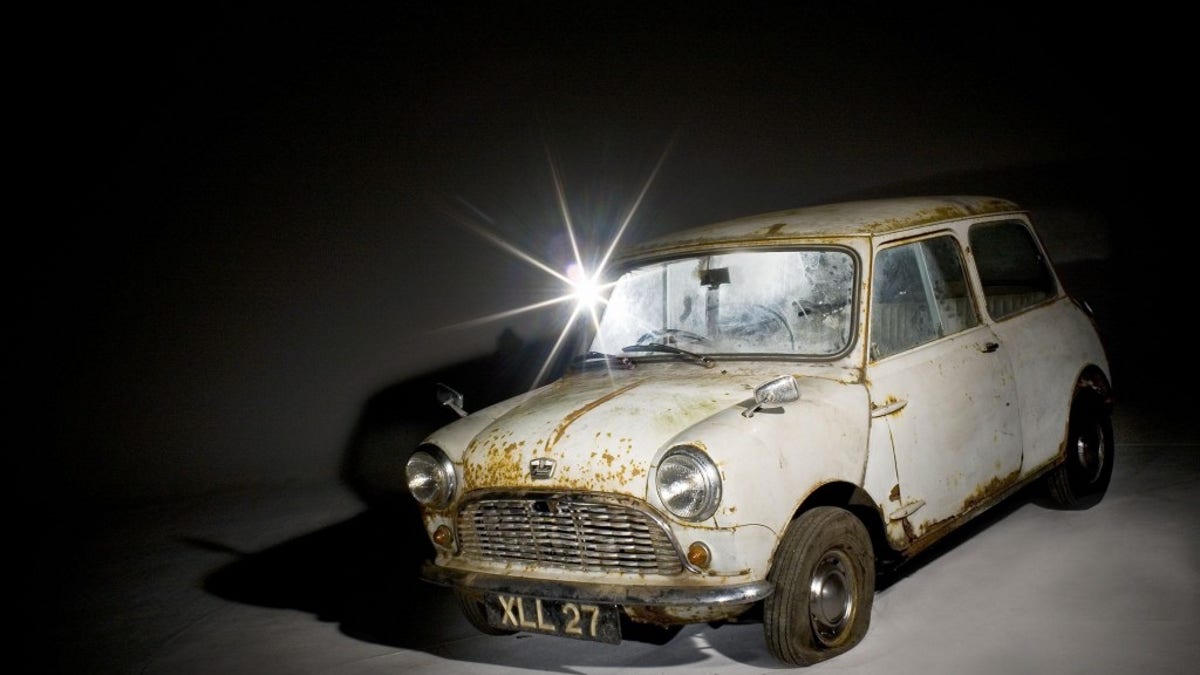
(Bonhams)
Rust does more than prematurely age your car. If left unattended, rust can spread and seriously damage your car.
What causes your car to rust?
In scientific terms, rust is iron oxide that forms when cast iron comes into contact with oxygen or water, especially if salt is introduced to spark an electrochemical process called corrosion.
Salt is a big rust trigger, especially if you live by the ocean. Salt-filled air comes in contact with your car, causing rust to form quicker than it would under normal conditions. But don't think you and your car are off the hook if you live hundreds of miles from the coast; the salt used to melt ice and snow during the winter can lead to a rusty car as well. Damage to the primer and paint on cars caused by anything from scratches to dents means rust-causing moisture can reach the metal beneath.
Parts of your car that are more prone to rust include the trunk compartment, engine and frame. The undersides of your vehicle may be the location of your worst rust problems says Terry Haltom, the education manager for the collision repair and refinish (CRRT) program at Universal Technical Institute (UTI) in Sacramento, Calif.
Results of rust
Not only does rust diminish the otherwise attractive appearance of your car, it can also be dangerous. And Haltom says that even with rust-proofing treatment, your vehicle can still rust.
"It is always best to keep checking your vehicle for signs of rust and addressing corrosion problems as they appear," he says. "This is especially important if you live in a climate where they use anti-icing agents on the roads."
Removing rust
"If you find significant rust or rust that is affecting the painted or exterior of your vehicle, your best bet is to call in the professionals," says Haltom. "The rust may have caused structural damage that the average do-it-yourself person is not equipped to fix."
However, there are ways to treat small rust spots in areas where there is no paint yourself, he says.
What You'll Need:
- Protective glasses
- Face mask
- An abrasive pad ("The one you're using in the kitchen will do," Haltom points out.)
- Sandpaper
- Disposable gloves
- Rust metal primer or a car-quality sandable primer (both of which you can find at your local auto parts store)
- A can of rust neutralizer or converter such as POR-15 or Locktite Rust Neutralizer
- A clean and soft cloth
- A small paint brush. (Pick one up at the auto parts store or use something along the lines of a model paint brush.)
- Newspaper to spread under the area where you will be working
- Mineral spirits
Spread out the newspaper under your work area. Check the area surrounding the rust spot for any loose materials or fragments and remove them. Rub away the visible rust with the abrasive pad. Using your small paint brush, carefully apply some of the rust neutralizer or converter. "Make sure you follow the instructions on the package on how long you need to wait before you proceed to the next task," Haltom adds.
Wait about 24 hours and then apply primer, following the directions on the package. Wipe down the area with a damp cloth when it is safe to do so to get rid of excess primer, and then wipe the spot dry.



















